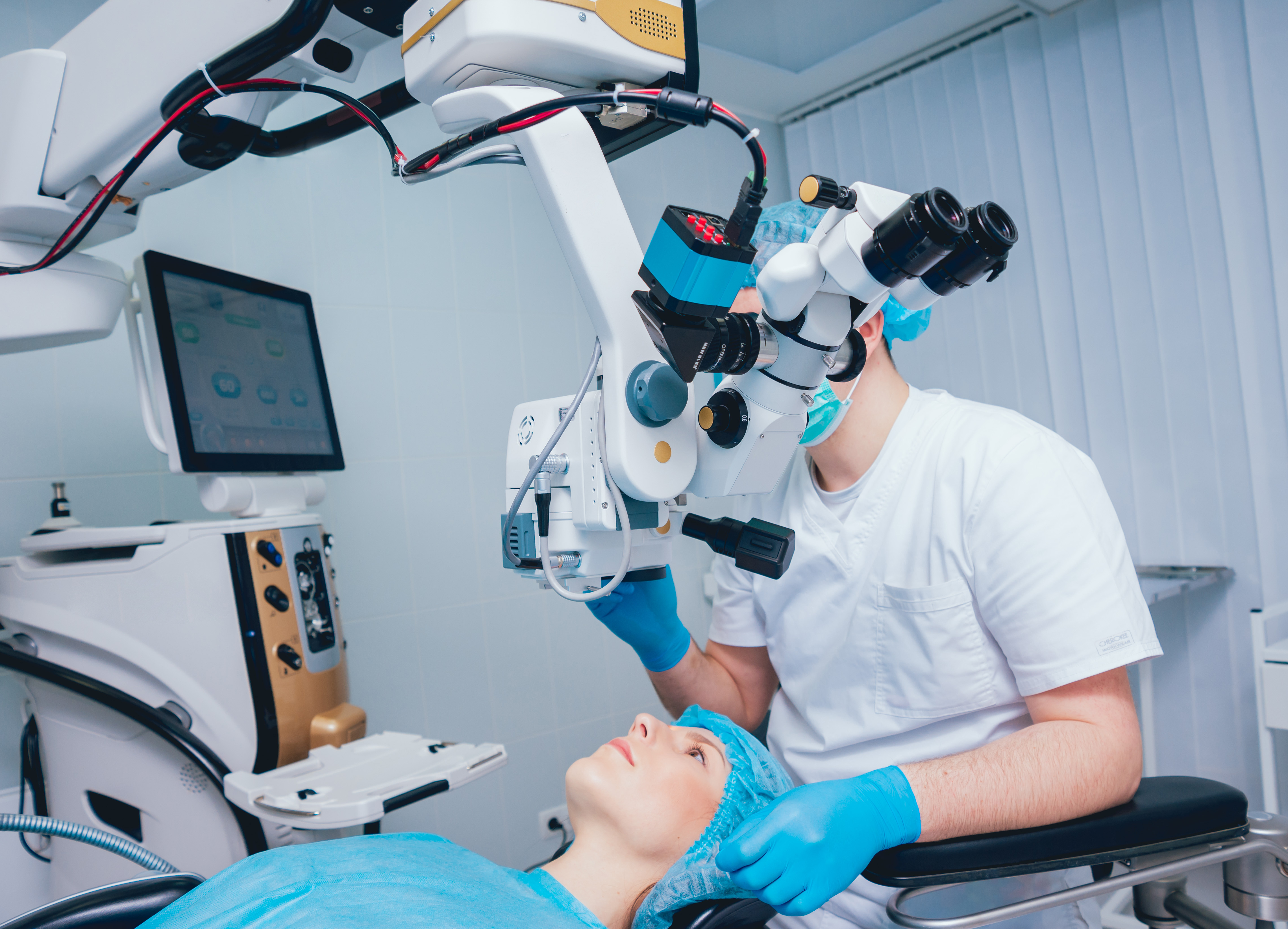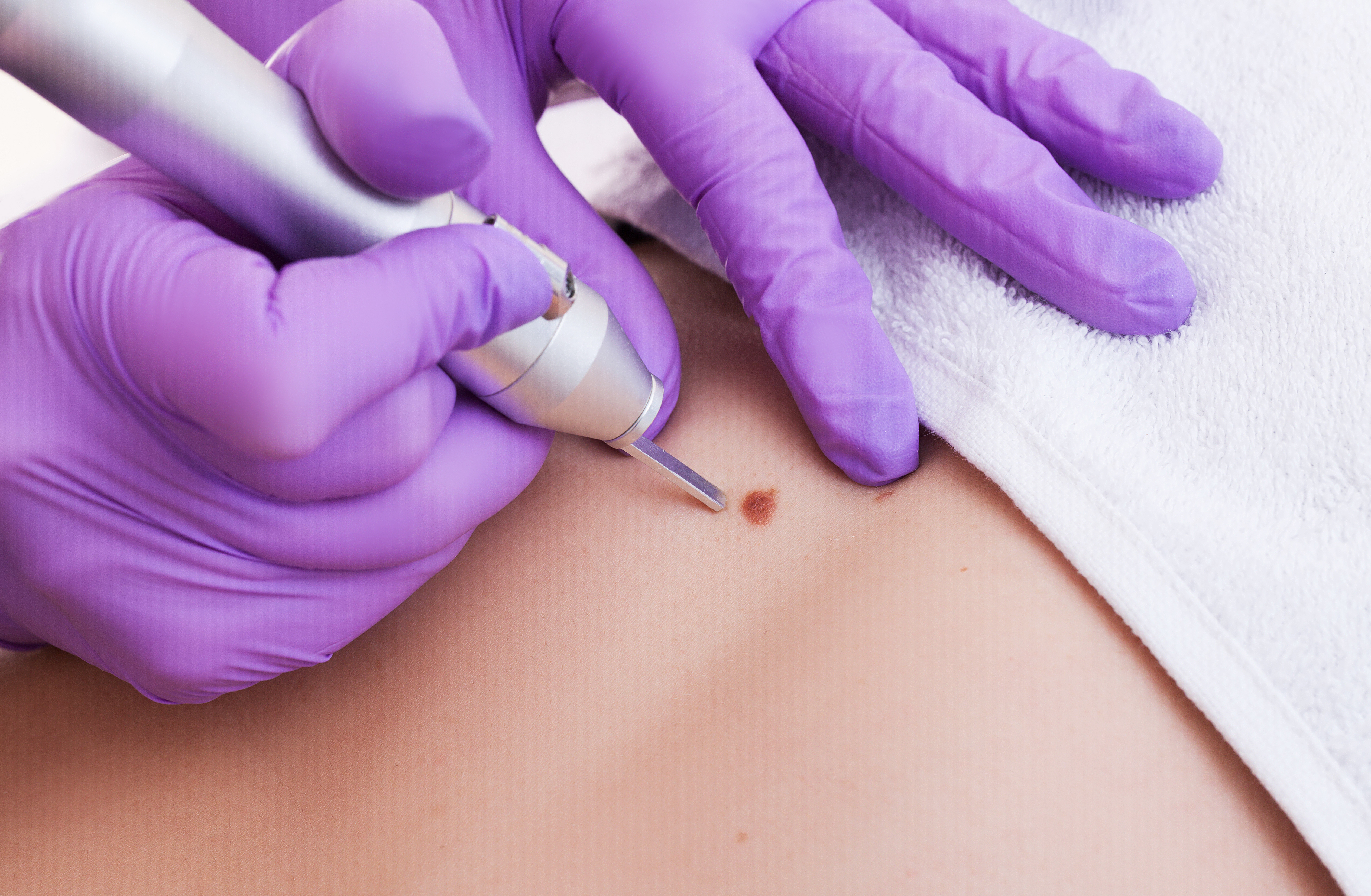
Glaucoma Surgery: Overview, Diagnosis, and Treatment
Glaucoma is a fairly common eye condition. To ensure total recovery from this ailment, you may need to undergo surgery. Curious about the glaucoma surgery process? Discover all the details in the review below.
What is Glaucoma Surgery?
Glaucoma surgery is a series of ocular surgical procedures employed to halt eye damage caused by glaucoma, preventing further deterioration.
Glaucoma itself falls into the category of fairly common diseases among the general population, especially within the 70-80 age group.
This disease typically affects both eyes simultaneously, with one eye often exhibiting a higher severity level.
In most cases, this condition is caused by fluid accumulation in the front area of the eye, leading to increased intraocular pressure.
As the volume of accumulated fluid increases, so does the pressure within the eye. Excessive pressure can result in damage to the optic nerve, which connects the eye to the brain.
Therefore, untreated glaucoma can lead to permanent blindness.
Glaucoma Symptoms
This disease tends to progress very slowly over the years, often causing symptoms that are not readily apparent.
Consequently, many individuals remain unaware of their glaucoma condition, leading to delayed intervention.
In most cases, symptoms of glaucoma include blurred vision and the appearance of rainbow-colored circles when looking at bright lights.
In rare instances, glaucoma can progress rapidly, manifesting symptoms such as:
- Red eyes.
- Intense eye pain.
- Headaches.
- Nausea.
- Vomiting.
- Discomfort around the eye area.
- The appearance of light circles.
- Blurry vision.
Glaucoma that develops suddenly is considered an emergency condition requiring immediate attention.
Types of Glaucoma
Several types of glaucoma may occur, classified based on their causes:
- Open-Angle Glaucoma: This is the most common type, characterized by slow progression over the years due to gradual blockage of the eye's drainage channels.
- Acute Angle Closure Glaucoma: This rare type progresses rapidly due to sudden blockage of the eye's drainage channels, leading to a rapid increase in intraocular pressure.
- Secondary Glaucoma: Triggered by existing medical conditions such as uveitis (inflammation of the middle layer of the eye).
- Childhood Glaucoma / Congenital Glaucoma: Extremely rare, caused by congenital eye defects resulting in eye damage or abnormalities in eye structure growth.
Glaucoma Risk Factors
Several factors can increase the risk of developing glaucoma, including age, ethnicity (individuals of African, Caribbean, or Asian descent face higher risks), family history of glaucoma, and other health conditions such as diabetes or refractive errors.
Preventing Glaucoma
While there's no definitive way to prevent glaucoma, regular eye examinations are strongly recommended, ideally every two years.
Individuals with glaucoma risk factors should undergo more frequent screenings to enable early detection and prompt treatment.
Eye health examinations are painless and relatively quick, alleviating excessive concerns.
Types of Glaucoma Surgery
When glaucoma cannot be managed with eye drops or laser treatment, surgery is often recommended.
However, it's crucial to note that surgery cannot restore the eyes to their original condition but aims to halt eye damage, thus reducing the risk of blindness.
Various types of glaucoma surgery may be recommended based on the type and severity of glaucoma:
1. Trabeculectomy
This procedure targets open-angle glaucoma, typically lasting less than an hour. It involves creating a small opening in the sclera (the white part of the eye) to improve fluid drainage, thereby reducing intraocular pressure. The incision is placed beneath the eyelid, minimizing visible scarring.
2. Glaucoma Implant Surgery
This procedure may be used for several glaucoma types, including congenital glaucoma, neovascular glaucoma, and secondary glaucoma. It involves implanting a small tube into the white part of the eye to drain excess fluid, thus reducing intraocular pressure.
3. Minimally Invasive Glaucoma Surgery (MIGS)
MIGS involves micro-incisions using microscopic tools to reduce eye pressure. It's the newest type of surgery with minimal side effects and a quick procedure, usually lasting only a few minutes. However, MIGS is only suitable for mild glaucoma cases and comes with a significant cost implication.
Glaucoma Surgery Procedure
Here are the detailed stages typically involved before, during, and after glaucoma surgery:
1. What Happens Before Glaucoma Surgery?
Before undergoing surgery, a consultation session with the surgeon is usually scheduled. During this consultation, the surgeon will:
- Conduct a comprehensive eye examination using specialized equipment.
- Discuss your expectations regarding the surgery outcomes.
- Review your medical history.
- Assess any medications you are currently taking.
Additionally, the surgeon will provide specific instructions to be followed in the period leading up to the surgery.
Instructions may vary from person to person, tailored to individual conditions. However, general instructions typically include:
- Discontinuation of nonsteroidal anti-inflammatory drugs (NSAIDs), aspirin, or blood thinners to reduce the risk of bleeding.
- Ensuring that a family member, relative, friend, or driver is available to escort you home post-surgery, as you will be administered anesthesia and sedatives during the procedure.
- Clarifying which medications are permissible and which should be avoided before surgery.
- Fasting for a specified period, depending on the type of anesthesia planned for the surgery.
2. What Happens During Glaucoma Surgery?
Generally, glaucoma surgery is performed under local anesthesia, allowing you to remain conscious during the procedure. You may also receive sedatives to promote relaxation.
However, in some cases, general anesthesia may be necessary, rendering you completely unconscious.
Rest assured that undergoing surgery while conscious shouldn't cause discomfort, as the anesthesia and sedatives administered ensure a pain-free experience.
3. What Happens After Glaucoma Surgery?
Most individuals are allowed to return home immediately after surgery without requiring hospitalization. However, it's essential to avoid driving yourself home.
Let someone else drive for you to prevent accidents due to residual effects of anesthesia and sedatives.
Subsequently, you'll need to follow up with your doctor as scheduled for regular check-ups to monitor intraocular pressure and assess your vision quality.
Post-Surgery Healing Process
The healing timeline depends on the type of surgery undergone. For mild glaucoma surgeries, you can typically go back to normal activities the day after.
However, for severe cases, you may need to limit certain activities temporarily, such as avoiding heavy lifting for a month. Additionally, you'll likely be prescribed eye drops to be used regularly until your next examination.
You may also receive an eye patch to keep the eye area dry and shielded from potential infection. It is also used to prevent inadvertent rubbing or scratching during the healing period.
Glaucoma Surgery Side Effects
During the healing process, you may experience temporary blurred vision, which typically improves within weeks. Additionally, other possible side effects include:
- Red eyes
- Irritation
- Eyelid swelling
- Watery eyes
- Sensation of foreign particles like dust or sand in the eye
- Development of cataracts
- Low eye pressure
- Infection
- Loss of vision
Should you experience any of these side effects, don't hesitate to contact an eye doctor for further evaluation.
Despite the potential risks of side effects, the success rate of this surgery is high. Side effects can also be minimized through proper examination procedures, surgery, and post-operative care.
Hence, there is no need to hesitate when considering glaucoma surgery in order to preserve your vision.
If you're planning to undergo a glaucoma examination or surgery, The Sanur is one of the finest options available.
Located in the Special Economic Zone (SEZ) for Health on the island of Bali, The Sanur boasts a state-of-the-art eye clinic staffed by professional doctors.
Coupled with world-class hospitality and a serene environment, The Sanur offers the utmost comfort and reliability for undergoing glaucoma surgery procedures. Schedule a consultation at The Sanur now!
Related Articles

Mole surgery is a safe procedure with a relatively high success rate. What preparations are needed ...

Kidney stones (nephrolithiasis) are hard objects formed from chemicals in the kidneys. Once formed, the stone ...

Dental implants can be an excellent solution for replacing damaged or lost adult teeth. Before deciding ...

